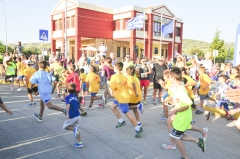04 September 2017
 Researchers from Active Healthy Kids Australia (AHKA) at UniSA are going straight to the source to find out why Australian kids are becoming increasingly inactive.
Researchers from Active Healthy Kids Australia (AHKA) at UniSA are going straight to the source to find out why Australian kids are becoming increasingly inactive.
AHKA has established a Youth Advisory Council (YAC) to engage young Australians and give youth a voice when it comes to physical activity to determine how to encourage kids to be more active.
Each state and territory is represented with 16 Council members, aged 8–16 years recruited via social media from around Australia (with parent/guardian permission).
During meetings the group discusses a wide range of topics including why physical activity is important, what activities are most popular and why they think children choose not to be active, with members able to dictate their own discussions.
Since 2014, AHKA has been on a mission to increase the physical activity of Australian children using its evidence based ‘Report Card’ that assigns grades to 12 physical activity indicators.
The 2016 Report Card found children scored a ‘D-’ for overall physical activity with national data indicating 81 per cent of Australian children and young people aged 5-17, did not meet the national daily physical activity guidelines. The Report Card also graded the ‘school’ environment with a ‘B-’ for infrastructure, policies and programming.
AHKA Co-Chair, Dr Natasha Schranz (School of Health Sciences, UniSA) says a whole community effort is needed.
“While it is clear that kids need to be moving more and sitting less overall, we acknowledge that a united, whole community effort is needed to increase and encourage physical activity among our children that includes the school environment, supported by parents and health professionals.”
In the lead up to National Health and Physical Education (HPE) Day on September 6 (as organised by the Australian Council for Health, Physical Education and Recreation [ACHPER]), AHKA thought it was important and timely to ask members of the YAC what they really thought about Health and PE at school.
“It was clear during our first meeting that the YAC members enjoy Health and PE lessons because they are fun and challenging and allow them to be active while offering greater social connection with their friends and peers compared to other lessons during the school day,” Dr Schranz says.
However when asked what they don’t like about Health and PE lessons, “members said that at times the lessons aren’t challenging enough and therefore a bit boring, and they also find it particularly de-motivating when participation from other class members is low – either because some students think PE is ‘uncool’, or because they lack confidence”.
“It was also interesting to hear that YAC members thought their PE teachers could make their lessons better by getting more involved in the activities they teach, by encouraging (reluctant) students to participate more, and by occasionally inviting ‘experts’ to teach different skills, sports or activities.”
National Executive Director, ACHPER Alison Turner says current research shows an increase in sedentary living and a decrease in engagement with activity, so we should listen to what the YAC has to say.
“Their collective voice today can speak for the health of our children tomorrow,” Turner says.
“We want to ensure that ACHPER, education and other advocates for physical activity provide opportunities for immediate action and are catalysts for implementing change that is appropriate for the 21st Century.
“ACHPER is being proactive by taking the time to listen to the YAC and to support the educative and health solutions relating to youth physical activity that their discussions suggest."
With the AHKA Youth Advisory Council now up and running, Dr Schranz says we are in a much better position to collect and understand children’s opinions about physical activity and to communicate with them more effectively in a bid to combat and reverse the physical inactivity trend across all age groups.
Media contact: Georgia Aish mobile: +61 413 314 726 email: Georgia.Aish@unisa.edu.au



